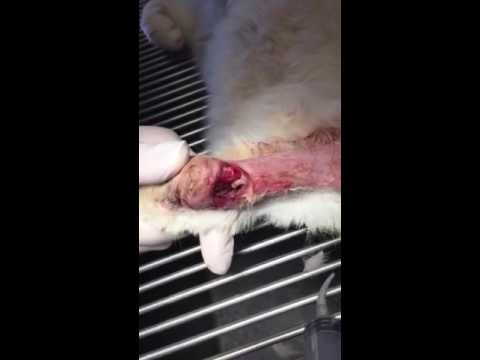
Cats are known for being clean and self-grooming. But sometimes, even the most hygienic feline can fall victim to something deadly—maggots. If you’ve ever wondered, can maggots kill a cat? The unsettling truth is: yes, they can.
This isn’t just a summertime issue or a problem for strays. Even indoor cats, especially those with hidden wounds, poor mobility, or dirty cat litter, are at risk. Maggot infestations, medically known as myiasis, can turn into a life-threatening emergency within days.
In this article, you’ll discover:
- The truth behind how maggots endanger your cat
- Warning signs to catch early
- Natural and medical treatment options
- How to prevent this scary condition using clean cat litter and better hygiene
Table of Contents
Can Maggots Kill a Cat? Yes, and Here’s How It Happens
The short answer: yes, maggots can kill a cat, especially when left untreated. Flies lay their eggs on a cat’s skin, usually near a wound or dirty area. These eggs hatch into larvae (maggots) that dig deep into the tissue, eating away at living flesh.
Why it’s deadly:
- Maggots destroy skin and tissue rapidly
- Secondary infections can lead to sepsis
- Pain and shock can weaken the immune system
- If the infestation reaches internal organs, death may follow
Cats with long hair, mobility issues, or poor hygiene habits are most vulnerable. One overlooked scratch, combined with damp fur or dirty cat litter, creates the perfect breeding ground for flies.
How Fast Can Maggots Kill a Cat?

Time is critical when it comes to myiasis. Depending on your cat’s immune system and the size of the infestation, tissue damage can begin within 24 to 72 hours.
In mild cases, maggots may only damage the surface skin, causing discomfort. But in severe cases—especially when wounds are hidden—maggots can burrow into the flesh and lead to organ failure or deadly infections in a matter of days. Cats that spend time outdoors, avoid grooming, or lie near cat litter soaked with urine are most at risk of unnoticed infestations.
Maggots in Cat Wounds – Spot It Early, Save Your Cat
When flies lay eggs in a moist, damaged area of skin, the larvae hatch fast and begin feeding on tissue. This is called feline myiasis, and catching it early can prevent painful surgery or worse. Cats with thick coats, mobility issues, or dirty rear ends are at higher risk because skin stays damp and hidden.
How Wounds Become Targets
- Moisture + warmth + odour attract flies. A small scratch under matted fur can become a nursery for larvae.
- Areas contaminated by urine or faeces—especially when cat urine turns litter to mud and sticks to fur—create a sticky, bacteria-rich layer that attracts flies.
- Post-surgery incisions that aren’t kept clean can develop flystrike in warm weather.
Early Signs Owners Miss
- Sour or rotten smell from fur even after surface cleaning.
- Patchy fur loss reveals raw, oozing skin.
- Tiny “rice-like” movement in the wound (actual larvae).
- The cat is repeatedly licking, biting, or hiding.
What To Do Right Away
- Gently separate fur and inspect under bright light.
- Clip or trim the surrounding hair if safe.
- Flush with sterile saline; do not pour harsh chemicals.
- Contact a vet—deep infestations need wound debridement, larval extraction, and antibiotics for secondary bacterial infection.
Bottom line: Any open lesion—especially one exposed to dirty bedding—should be treated like a veterinary emergency in warm seasons.
If Your Cat Ate Maggots – What’s Risky, What’s Not
Cats are scavengers by instinct. They may eat insects, spoiled food, or even larvae from trash or soiled bedding. Most ingested maggots pass without major illness, but not always. The risk depends on what the maggots were feeding on: carrion, faeces, or infected tissue can introduce pathogenic bacteria, intestinal parasites, or toxins.
Immediate Home Check
- Watch for vomiting, diarrhoea, drooling, or refusing food.
- Check the mouth for stuck larvae, cuts, or odour.
- Offer clean water and a fresh meal.
When to Call the Vet
- GI upset lasting more than 12–24 hours.
- Known exposure to dead animals or spoiled meat.
- Immune‑compromised, elderly, or very young cats.
Hygiene + Travel Tip
If a cat eats maggots from travel carriers, spilt food, or a soiled travel box, clean everything immediately. Many pet parents wonder: Can you bring cat litter on a plane? Yes, but always transport it sealed and change it after the trip. Stale travel litter mixed with food debris can attract flies that lay eggs, raising future maggot risk.
Supportive Care
A vet may recommend anti‑nausea meds, probiotics, or testing for gastrointestinal parasites if symptoms persist.
Vinegar Treatment at Home – Safe First Aid for Light Cases
If you spot a very early surface infestation, careful home care may help stabilise the situation until you reach the vet. Vinegar (especially diluted apple cider vinegar) can help loosen debris and discourage larvae on the surface, but it is not a cure for deep tissue invasion.
Safe Use Steps
- Clip the surrounding fur with clean scissors.
- Rinse the area with lukewarm saline to remove dirt.
- Dab a 1:1 diluted apple cider vinegar + water solution on the outer skin using gauze. (Avoid pools of liquid in deep cavities.)
- Pat dry; moisture promotes larvae.
- Protect with a breathable dressing if advised by a vet.
When to Stop
- If the cat shows pain, skin colour darkens, or tissue looks “pitted.”
- If larvae return after flushing, this indicates deeper tunnelling.
- If there’s fever, swelling, or smell, it requires systemic antibiotics.
Pro Tip: Pair early wound care with improved hygiene: fresh bedding, trimmed fur, and dry toileting areas reduce reinfestation.
Home Remedies That Help (But Know Their Limits)
Owners often ask about natural fixes, especially when vet care isn’t immediately available. While nothing replaces professional treatment, some supportive steps can slow progression in mild cases.
Useful Supportive Measures
- Warm saline compresses to soften crusts and expose larvae.
- Diluted chlorhexidine (vet-approved concentration) for surface disinfection.
- Topical medical honey (ask your vet) supports moisture balance and tissue healing.
- Light dusting with food-grade diatomaceous earth around bedding—not on open wounds—to deter crawling insects.
- Frequent removal of soiled bedding before moisture + organic matter attract flies.
High-Risk Mistakes to Avoid
- Sealing wounds with petroleum jelly (traps larvae).
- Pouring bleach, kerosene, or DIY insect sprays (causes burns).
- Ignoring wounds because they “look small.”
Home remedies are supportive only. Deep tissue damage requires professional larval removal, pain management, and possibly IV fluids if infection spreads.
Ivermectin & Veterinary Treatment – When DIY Isn’t Enough
Serious infestations demand veterinary care. After sedation, the vet will physically remove larvae, clean necrotic tissue, and assess how far the damage extends. In moderate to severe cases, medications like Ivermectin or other antiparasitic therapies may be used to kill remaining larvae.
What to Expect at the Vet
- Full exam to locate all infestation sites (tail base, ears, folds).
- Sedation or anaesthesia for safe, thorough cleaning.
- Mechanical larval extraction using forceps and flushing.
- Topical antiparasitics and broad‑spectrum antibiotics.
- Pain meds and fluids if dehydrated.
Is Ivermectin Safe?
When dosed correctly, it can be highly effective—but overdosing is dangerous, especially in kittens, the underweight, or certain breeds with sensitivity. Always rely on weight-based veterinary dosing.
Aftercare at Home
- Keep wounds clean and dry.
- Daily inspection for new larvae.
- Use screened areas or indoor recovery until healed.
- Maintain pristine toileting areas; even damp bedding can restart a maggot lifecycle.
Further reading:
Gastrointestinal Parasites of Cats
How to Get Rid of Worms in Cats
FAQs – Can Maggots Kill a Cat
Q1: Can maggots kill a cat without the owner noticing?
Yes. In many cases, maggots develop deep inside wounds where fur hides the damage. Without regular grooming checks or clean cat litter, infestations can go unnoticed until serious symptoms appear.
Q2: How long does it take for maggots to become dangerous?
It may take only 24–48 hours for maggots to start damaging skin tissue. In weak or ill cats, complications may set in faster.
Q3: Can I use vinegar or salt to kill maggots?
Yes, apple cider vinegar can help repel maggots temporarily. Salt may dry them out, but it can also hurt your cat’s skin. Never treat a deep wound without a vet’s approval.
Q4: How does dirty cat litter increase the risk of maggots?
Dirty cat litter attracts flies, especially if there’s faeces or urine buildup. Flies may lay eggs nearby, and if your cat has a wound, larvae can migrate to that area.
Q5: Is it safe to clean maggots off a cat at home?
If the infestation is mild, yes—but only if you can see all the larvae, clean the wound, and the cat is calm. For moderate to severe cases, always go to the vet.
Wrapping up: Can Maggots Kill a Cat? Here’s What You Need to Remember
So, can maggots kill a cat? Sadly, yes—and faster than most pet owners realise. But the good news is that with quick action and proper care, you can save your furry friend.
The biggest takeaway is prevention. Regular grooming, wound checks, and a clean environment are your cat’s first line of defence. Always keep the litter box clean and dry because a damp, dirty area invites flies, which can start the maggot cycle. Combine this with frequent inspections of your cat’s fur and skin, especially during warm, humid months.
If you ever notice an unusual smell, irritated skin, or wriggling larvae, act immediately. Begin basic wound care, and then call your vet for expert treatment. Remember, early intervention can be the difference between a quick recovery and a life-threatening emergency.
Your cat trusts you for protection—stay vigilant, keep their litter box fresh, and you’ll drastically reduce the risk of this frightening condition.



